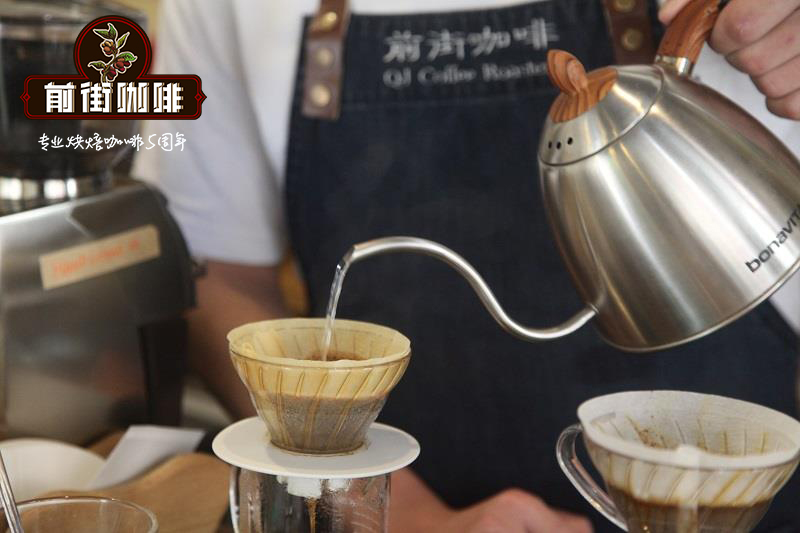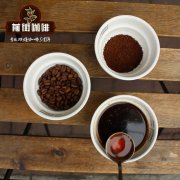What kind of Kaduai is it? the Kaduai Cup is set up for a variety.

The Catuai line of coffee has been produced for more than 40 years, and although it is no longer a novelty on the market, it is valued for its high output, reliable quality and potential profitability for producers.
Recently, there are signs that a revival of Catuai may be taking place. In 2019, many Catuai varieties received outstanding ratings as the best coffee in the world, or were awarded the Brazilian extraordinary Cup for the second year in a row.
Where does Kaduai come from? what breed is it?
Although it has been studied since the 1940s, the Catuai variety was not officially introduced to Brazil until 1972. It is a genetic cross between two natural Arab mutants of Yellow Kaddura (Yellow Caturra) and New World (Mundo Novo) and can be red and variant. Because it is a smaller plant, it can be planted more closely together, increasing the planting density and making it easier to approach cherries during harvest.
Catuai was first introduced to Guatemala in 1970 and now accounts for 20 per cent of the country's coffee production. Since then, it was introduced to Honduras in 1983 and now accounts for nearly half of all Arabica coffee grown. Finally, it was introduced to Costa Rica in 1985.
Jorge, a Brazilian coffee researcher, said that although there are many subtypes of Catuai, most Central American countries do not identify them by their technical names.
Production and processing
The first harvest of Catuai usually takes place only three years later. As Jo ã o said, this is a plant that is good at killing insects and fertilizing, which means that management in the production process can help determine plant productivity.
He added that because some may be ready for harvest earlier, while others may be ready for harvest later, labour and machinery can be allocated for a long time. "the model is also more suitable for optimizing post-harvest and storage structures so that buying and selling transactions can be conducted more frequently," he said. "
For processing and drying, the method varies from country to country. S é rgio Pereira Parreiras, a scientific researcher at IAC (Agron ô micode Campinas Institute), said that in Brazil, traditional and natural Catuai processing methods are preferred because they can add cups and form unique contours. In Central America, more and more small producers are drying coffee naturally in bed. Solarization and mechanical drying are also popular here, Jorge said.
Kaduai's biggest problem is its poor resistance to rust, fungal infections and pests. However, with the emergence of a new generation of varieties, this situation is changing. According to Sergio, because of the more stable climatic conditions here, plants produced in Brazilian soil are not as easy to rust as in other producing countries. But, he added, it will need to increase investment in fertiliser in Central America, which could reduce producers' profits.
"mechanized coffee cultivation is adopted," he said. Following good agricultural practices and applying pesticides only at the right time, the problem of rust will not have as much impact as in Central America and Colombia. Therefore, here, with the help of pesticides, we have managed to maintain high productivity in mechanized areas.
Brief introduction of Kaduai Cup
Catuai can have a variety of attributes and sensory qualities, depending on how and where it is produced and processed. For Jo ã o, "there are several descriptors: chocolate, caramel, caramel, honey, almonds and spices [e.g.] nutmeg and citronella". It is recommended to bake it lightly to moderately to show its best quality.
When it comes to different color varieties of Catuai, there is no significant difference in flavor. Hannah Newschwander (Hanna Neuschwander), director of communications for World Coffee Research (World Coffee Research), told me: "the effects of genetic differences (such as red and yellow) on flavor have not been fully studied. There is no good experiment to try to isolate the problems I know. "
Jo ã o said that for him, the red Catuai can have a fuller body, while the yellow Catuai can have a softer body, but it will depend on the climatic conditions and altitude that occur during the growth process, as well as the processing process after harvest. Red katui beans tend to produce more complex coffee, he added.
Louis Mello is a question and answer grader and founder of the supernova coffee and roaster chain in Brazil. Although yellow cherries are the first choice in the international market, blind cupping tests usually fail to sense specific differences between varieties, he said. He added that both consumers and professional tasters should conduct blind taste tests on different varieties of coffee so that they can learn to determine the difference between Catuai or Mundo Novo varieties.
Although Catuai coffee is characterized by fast-growing coffee plants, it is highly susceptible to coffee rust and coffee berry disease. It also has high nutritional requirements in the growth process, which means that it may need additional investment and care from producers during the growth stage.
Nevertheless, it can produce a variety of particularly unique cup contours depending on where and how it is planted. Further consumer and baking education that must be provided for Catuai varieties will be the key to increasing its popularity and ensuring that there is demand for it now and in the future.
Important Notice :
前街咖啡 FrontStreet Coffee has moved to new addredd:
FrontStreet Coffee Address: 315,Donghua East Road,GuangZhou
Tel:020 38364473
- Prev

Panamanian BOP victorious General Duncan Manor Story introduces boutique manor-level coffee flavor
Ricardo, the owner of Duncan in Panama, is a gentle and well-spoken gentleman. Every speech makes people concentrate. Ricardo devotes himself to the study of coffee varieties, with special emphasis on what kind of trees are suitable for planting coffee beans at different elevations. The developed top-level picking methods and collection picking methods have a profound impact on high-quality coffee.
- Next

Innovation in Colombia Coffee Plantations: From Green Bean Processing to Diversity
We have been producing and consuming coffee for more than 600 years, but many of our methods are the same as those of centuries ago. High-quality coffee can still be hand-picked and dried in the sun on wooden boards and wire tables. Despite innovations in production and processing, such as experimental fermentation and honey coffee, many farmers are unable to produce coffee due to lack of resources, training or funding constraints.
Related
- Detailed explanation of Jadeite planting Land in Panamanian Jadeite Manor introduction to the grading system of Jadeite competitive bidding, Red bid, Green bid and Rose Summer
- Story of Coffee planting in Brenka region of Costa Rica Stonehenge Manor anaerobic heavy honey treatment of flavor mouth
- What's on the barrel of Blue Mountain Coffee beans?
- Can American coffee also pull flowers? How to use hot American style to pull out a good-looking pattern?
- Can you make a cold extract with coffee beans? What is the right proportion for cold-extracted coffee formula?
- Indonesian PWN Gold Mandrine Coffee Origin Features Flavor How to Chong? Mandolin coffee is American.
- A brief introduction to the flavor characteristics of Brazilian yellow bourbon coffee beans
- What is the effect of different water quality on the flavor of cold-extracted coffee? What kind of water is best for brewing coffee?
- Why do you think of Rose Summer whenever you mention Panamanian coffee?
- Introduction to the characteristics of authentic blue mountain coffee bean producing areas? What is the CIB Coffee Authority in Jamaica?

